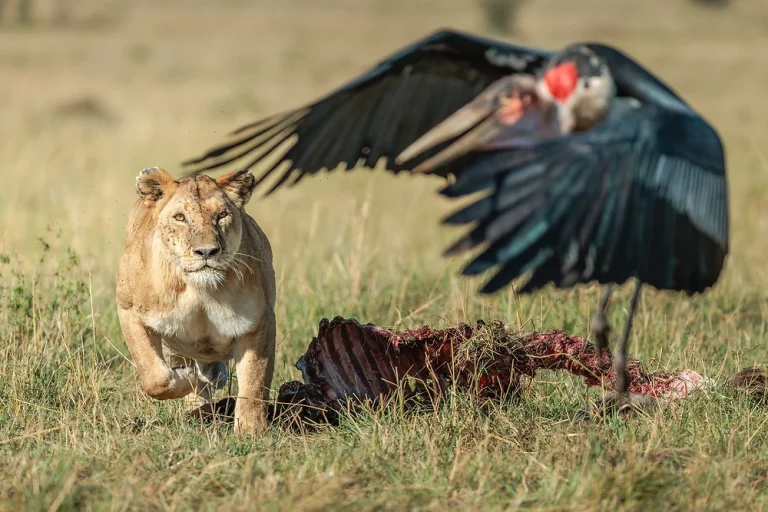The Maasai Mara, also sometimes spelled as Masai Mara and locally referred to as The Mara, is a vast national game reserve situated in Narok, Kenya. It shares borders with Tanzania’s Serengeti National Park and is named in tribute to the Maasai people, who are the original inhabitants of the region and migrated to the area from the Nile Basin. The Maasai people aptly describe the landscape as “Mara,” meaning “spotted” in their local language, highlighting the presence of short bushy trees scattered across the terrain.
Renowned as one of Africa’s premier wildlife conservation and wilderness areas, the Maasai Mara is home to diverse populations of iconic animals such as lions, leopards, cheetahs, and African bush elephants. The reserve is particularly famous for hosting the Great Migration, a spectacular natural phenomenon that has earned it a place among the Seven Natural Wonders of Africa and recognized as one of the ten Wonders of the World.

Blue wildebeest, topi, plains zebra, and Thomson’s gazelle undertake migrations into and inhabit the Mara reserve, traveling from the Serengeti plains to the south and the pastoral ranches of Loita Plains to the northeast. This migration typically occurs from July to October or later. Additionally, herds of all three species are permanent residents within the reserve.
The “Big Five” – lion, African leopard, African bush elephant, African buffalo, black and white rhinos – can be found throughout the year. The black rhino population, once abundant until the 1960s, faced severe depletion due to poaching in the 1970s and early 1980s, dwindling to as low as 15 individuals. Although numbers have slowly increased, the estimated population stood at 23 in 1999. Notably, the Maasai Mara is the sole protected area in Kenya with an indigenous black rhino population, unaffected by translocations, and its size enables one of the largest populations in Africa.
The Mara and Talek rivers host large groups of hippopotamuses and Nile crocodiles. The plains between the Mara River and the Esoit Siria Escarpment are considered prime for game viewing, especially for observing lions and cheetahs.
The reserve is rich in large carnivores, with lions dominating in significant numbers. Spotted hyenas are abundant and often compete with lions for food. Leopards are found throughout the reserve where trees provide refuge. East African cheetahs roam the open savanna in high numbers, hunting gazelles and wildebeest. African wild dogs, though rare due to disease transmission and intense competition with lions, cover vast distances in elusive packs. Smaller carnivores coexisting include African wolves, black-backed jackals, African striped weasels, caracals, servals, honey badgers, aardwolves, African wildcats, side-striped jackals, bat-eared foxes, striped polecats, African civets, genets, several mongoose species, and African clawless otters.
Wildebeest dominate the Maasai Mara, numbering in the millions. Their annual migration, known as the Great Migration, sees them traveling north from the Serengeti plains in search of fresh pasture around July, returning south around October. This remarkable event involves around 1,300,000 blue wildebeest, 500,000 Thomson’s gazelles, 97,000 topi, 18,000 common elands, and 200,000 Grant’s zebras.
Antelopes, including Grant’s gazelles, impalas, duikers, and Coke’s hartebeests, inhabit the plains. The distinctive Masai giraffe is a resident, and rare species like the large roan antelope and the nocturnal bat-eared fox can be spotted within the reserve.
With over 470 bird species identified, including nearly 60 raptors, the park is a haven for avian enthusiasts. Migrant birds, vultures, marabou storks, secretary birds, hornbills, crowned cranes, ostriches, long-crested eagles, African pygmy-falcons, and the national bird of Kenya, the lilac-breasted roller, call the area home at various times of the year.